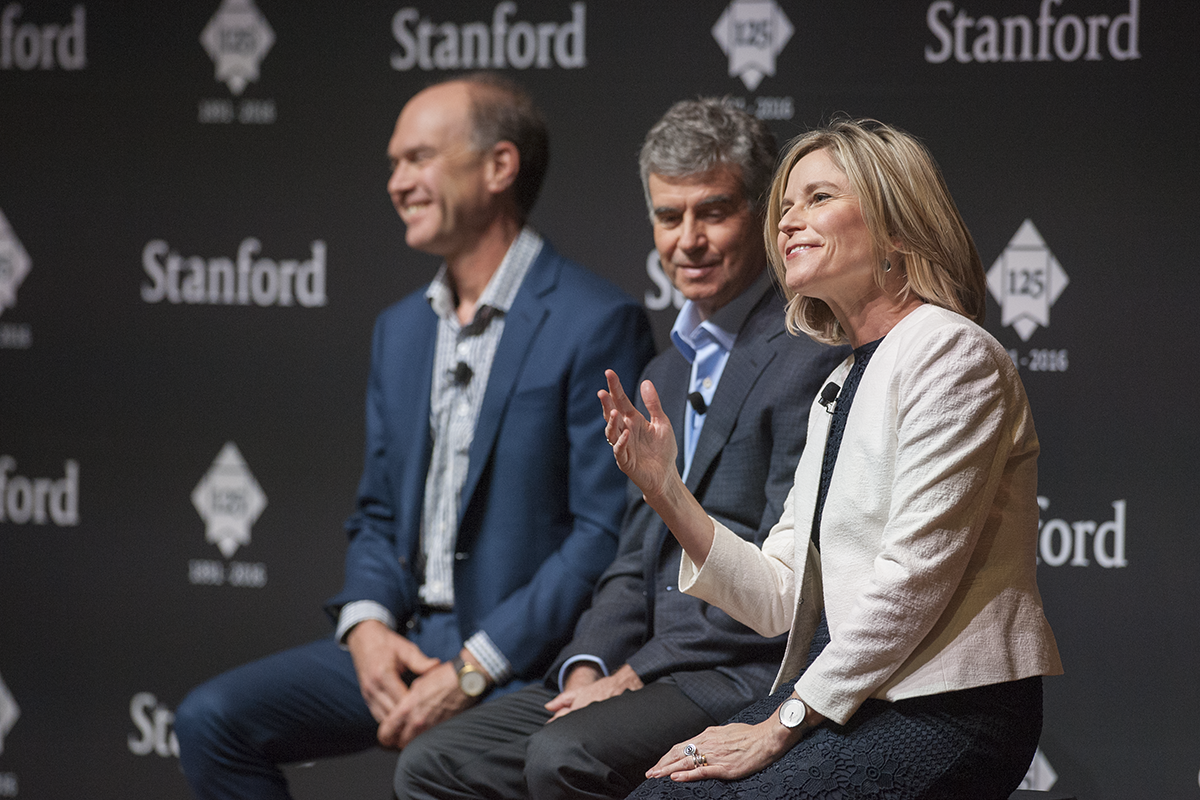Stanford symposium puts focus on education
By harnessing the educational power of virtual reality, Professor Jeremy Bailenson aims to raise our awareness of ocean acidification’s devastating effects. If we can “see” the results of our actions on a once-pristine coral reef, Bailenson’s research indicates we will act in more environmentally sound ways.
Advances in brain imaging technology permit Professor Bruce McCandliss to capture the effect of learning experiences on the brain’s circuitry. A new collaborative field – educational neuroscience – offers groundbreaking insights into how students learn.
In October 2015, Bailenson, McCandliss and leaders from fields as diverse as psychology, computer science, education, physics and the humanities discussed their work to better understand and improve learning. Topics ranged from effective teaching strategies in K-12 classrooms to envisioning the university’s role 25 years in the future.
Taking a multidisciplinary, collaborative approach was an overarching theme. We’re in “a renaissance time for learning and education,” said John Mitchell, vice provost for teaching and learning. Experts across disciplines are “working together and thinking about how we can teach and learn better.”
Stanford actively fosters this perspective, and “Thinking Big About Learning” provided an opportunity to share ideas with the greater community. The event, which drew more than 550 participants, was the first in a series of anniversary symposia celebrating Stanford’s 125th year.
Read more about the speakers and their unique contributions to the future of learning, and visit the post-event web page, where you can watch a video of each presentation.















